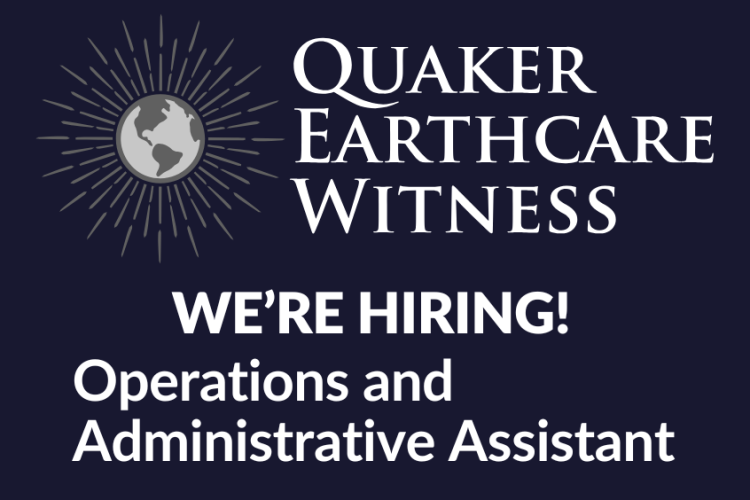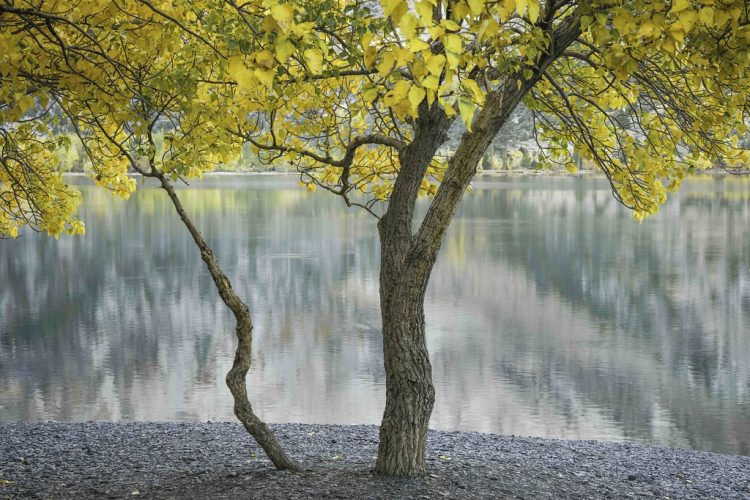Visioning the Future in a Full Earth

For some years it has been clear that environmental doom-saying, because it is a poor motivator, is a dead end. However true the predictions of global overheating, climate chaos, resource wars, pollution, and disease (with consequent mass death or displacement) may be, they lead most people to despair and denial rather than hope and resilience. Only a spiritual and emotional grounding (a transformation) gives us the power to change our ways. This not only moral teaching, but sound neuroscience.
A “full Earth” invalidates all previous human experience. No longer can we migrate or innovate our way out of the dilemma posed by infinite economic growth on a finite planet. A number of planetary boundaries have already been breached. The “developed” world of our generation is eating its way through the equivalent of 3.5 earths. This is something we need to address now. If pond scum doubles every hour, at the last hour when we could intervene, the pond still seems half clear. Apparently, not a problem.
A peculiar limit of the human mind makes it harder to develop an overall vision of future than to recall an (often imaginary) past Eden. Some of the world’s best scientists, eco-activists, ethical thinkers, and artists have been working on that vision. This article offers a rough guide to their work.
STARTING WITH LANGUAGE
The slogan “sustainable development” should be discarded, even though it is still a staple of the United Nations and business thinking. But viewed in the light of “full Earth,” its elements are self-contradictory. Although sustainable development was a necessary compromise in the UN’s Our Common Future, the 1992 Rio and subsequent Kyoto treaty, it is now outdated. Infinite growth is not sustainable. Quality of life, climate justice, and right sharing are sustainable. The much-touted “Green Economy” of Rio+20 failed because it proposed building the future by commodifying Earth’s commons; in fact it would finance climate action and better life for the world’s poor by selling licenses to pollute.
The new watchword is “resilience,” the ability of biodiversity to repair the web of life. In time the term may become overused and shopworn, but at this point it is a helpful guide.
ECO-ECONOMICS AND ECO-JUSTICE
Eco-economics was invented by Herman Daly (and others) emphasizing that production should serve social need and human society within the planet. On my blog, I have reported the astonishing variety of eco-economic thought (tagged EE) that has developed in recent decades. Much was simply a critique of standard economics—a critique from which Adbusters and Occupy have now made a protest movement. But some contributions in eco-economics have been positive and transformational.
Among these positive contributions are David Korten’s “great turning,” Vandana Shiva’s “earth democracy,” Via Campesina’s fight for food sovereignty, Blue Planet Project’s concept of water as a human right, the knowledge (and rights) of indigenous peoples partially recognized in UNDRIP, and World Future Council’s call for an Ombudsman for future generations. All of these efforts show a significant move toward human inclusiveness—or eco-justice, to use the current term. Desirable, but still incomplete. In the long view, planetary eco-justice involves a spiritual, “cosmic” relationship that is also scientific and natural: the commonwealth of all life.
VISIONS FOR OUR SHARED FUTURE
Key overall visions have begun to emerge in the last decade. Almost all include not only a set of proposals but a human process as well:
- Earth Charter Initiative, earliest and most abstract;
- Peoples Sustainability Treaties, a bottom-up coalition emerging from the wreckage of Rio+20;
- Climate Justice Now! network of NGOs the Convention on Biodiversity Alliance–see its 2010 Declaration;
- the Transition Town movement;
- international Degrowth conferences;
- the World Social Forum’s creation of altermondial, or eco-justice, networks;
- the World Council of Churches June 2012 Bogor Call based on the six-year AGAPE Consultation (Alternative to Economic Globalization Addressing Peoples and Earth).
- other ecumenical and interfaith bodies; Confucian, Hindu, Islamic, and Sikh green movements; Joanna Macy’s Buddhist-inspired Work That Reconnects and her book with co-author Chris Johnston, Active Hope;
- collaborative publications such as New Economics Foundation’s Other Worlds are Possible, Yes! Magazine, Orion’s Thirty Year Plan, and the Post-Carbon Institute’s Post Carbon Reader.
GET INVOLVED
Friends respond to Earth’s call for care in a variety of deep and rich ways. The Kabarak Call for Peace and Eco-Justice was approved by Friends World Congress in 2013, dedicating our efforts to peace and the repair of the world. The FWCC Living Waters gatherings seek to be “a practical expression for the ecological concerns of Friends worldwide, recognizing water as a precious and increasingly scarce resource.” And the ongoing Circles of Discernment (CoDs) give Friends a voice and community in which they can follow the leadings toward effective and sustainable solutions.
CONCEPTS & FURTHER RESOURCES
Full Earth: not only in the sense of population, but of human (over)use of resources. The concept is Herman Daly‘s; further developed by Robert Costanza and others. Similar concerns are shown by those speaking of climatic tipping points; the nine planetary boundaries of Johan Rockstrom et al demonstrate that human appropriation is breaking limits of nature’s resilience.
Resilience is a term from ecology, applied in the Transition Town movement to human recovery from oil dependency, and Via Campesina’s principle of food sustainability; in both cases, “localization” – local control – assures adaptability. Vandana Shiva’s “earth democracy” shares the assumption that local control is scientifically and socially preferable to an uncontrolled world market.
The title of Korten’s 2006 book, fundamental to collaboration by Yes! authors And BALLE green capitalists. Other thinkers such as Gus Speth, Paul Hawken, Bill McKibben call for eco-social transition: see the U.S. site greattransitionstories and NEF The Great Transition (2009).
United Nations Declaration on the Rights of Indigenous Peoples (2007) declares such rights, especially Free, Prior, and Informed Consent (FPIC) to the use of native knowledge or biology; but in many cases national and international respect of these rights is lacking. Indigenous groups have denounced the Rio+20 plan for a “green economy”, REDD, and CBD Nagoya “benefit sharing” which neglected such rights. The Oct 2012 Biodiversity conference in Hyderabad and 2014 World Conference on Indigenous Peoples promise to be flashpoints.

